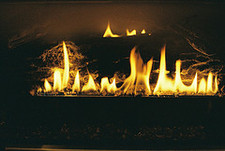
by blogediter | Nov 21, 2018 | Gas Logs
Gas Burn
We have often fielded the questions about Gas log fireplaces and why a damper has to be removed or restricted when a gas log fireplace is installed. If a gas log fireplace was installed after 1991 the building codes state that the damper must be disabled or removed. Below is a portion of a Q and A session on www.doityourself.com about this very topic. You can see our Q & A writeups on this topic here. http://www.chimneyballoonusa.com/blog/vented_gas_logs/index.html
Here is the Q & A session from DoIt Yourself.com on gas logs and dampers:
Q: The folks who are buying my home, upon advice of their home inspector, have asked that I remove the fireplace damper prior to closing escrow. I’ve explained that this would be impractical since an open chimney would allow warm air to escape from the home during the winter months. They agreed with this point but insisted that dampers are unsafe when fireplaces have gas burners. This is a new one on me. Are the buyers right about removing the damper? -B
A: Dear Bl, Changes in the safety requirements for fireplace dampers were enacted in 1991, but current standards apply only to newly installed gas log fireplaces…. click here to read the rest of the article”

by blogediter | Sep 21, 2018 | Gas Logs
Gas Burn
Q: Jason, I have a wood fireplace right now but no supply of wood. I am thinking of converting to a gas log fireplace to supplement my home heat. What do you think? -CM
A: CM, I have my opinions on this but this story from a customer speaks so well on the subject I will share that with you instead:
“…If you live in a cold climate area I wouldn’t really recommend you do anything with a wood burning fireplace, but plug up the chimney and maybe put a few candles in it. Why?… because I learned the hard way that fireplaces and gas logs are excellent ways to suck money right out of your pocket.
A few years ago I thought I would supplement my heat by burning wood in my fireplace. Turns out my heating bill went up because the fireplace was sucking the air out of my house when I burned. So I converted to a gas log fireplace (which it sounds to me like you have a partial gas log setup right now that needs fixing.) Well, part of having a gas log installed to code is to disable the damper or clip it open. This was even worse! I was constantly losing heat and the living room was drafty.
I ended up plugging the chimney with a Chimney Balloon to stop the cold draft from coming down the fireplace flue. This was allowable under code since the Chimney Balloon would melt and fall out if I accidentally light a fire under it. You see, this stupid “disable the damper building code” is only there so people don’t light a gas log and leave the damper closed on accident and therefore asphyxiate everyone in the house or set the place ablaze.
OK, long story short…I ran up my heat bill and spent $500 on a professionally installed gas log only to end up with a fireplace I don’t use because it wasted too much heat. So I put candles in it and plugged it with a Chimney Balloon.” – Terry B
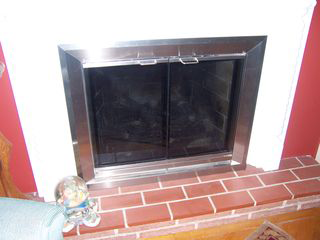
by blogediter | Sep 7, 2018 | Gas Logs
Q: Jason, I bought my Virginia home about 3 yrs ago, and have never thought about the amount of heat / ac leaving the home until seeing a “home energy saving” piece on the local news. They recommended using a “Chimney Pillow” as a possible solution.
So, I came to your website, spent the last 90 minutes reading EVERY one of your replies to all of these posts, and have become not only more educated on this topic but have developed an admiration for your knowledge & straightforwardness.
The extent of my expertise with fireplaces ceases after the determination has been made that I actually have gas logs (which I do) & not real wood!
Question: How would I know if I have Vented Gas Logs or Non-Vented Gas Logs?
There is a damper (presumably installed during the 1988 construction), which has been closed since move-in day. There is also a gas line that has been turned off since move-in day. I have a VERY cold fireplace & a relatively new chimney cap (installed as a condition of sale 3 yrs ago).
I am fairly convinced that I need a Chimney Balloon, but at 300 lbs with no official contortionist training, I have been reluctant to take the time to remove our toddler gate which would be required to gain access to the fireplace allowing for an appropriate measurement (trust me, it is an event to take this thing apart…14 ft of it that encircles the entire family room)!!
So I guess the first step is determining the vented vs. non-vented issue, then get to work on the toddler gate. Thank you in advance for your time & consideration! – MW
A: Hi MW, I’m sorry it took so long to respond to your post. It has been a very busy week on the phones.
To see if you have a vented or non-vented gas log I would look first on the manufacturer plate on the gas log burner itself. It is usually by the knob that controls the flame height. It should be indicated there. If you can even find a model # you can google that number and see what comes up. If there is no indicator of manufacturer or model on the burner unit, about all you can do is call a professional to come and look at it or take some digital photos of it to a fireplace retailer and get their input.
There is no simple way to identify a vented gas log from a non-vent if it is not marked, even professionals have a hard time indentifying one from another. I have seen plenty of homeowners assume they had a no-vent just because the damper was not removed or clipped open, but it turned out they had a vented unit. Getting this mixup wrong can be lethal, so it is nothing to guess at.
Since you gas log is disabled/inoperable and the gas is shut down to it, you can install a Chimney Balloon to stop the cold draft. Just make sure you mark the gas valve clearly with the red lockout tag that comes with a Chimney Balloon.
If you are not comfortable getting your fireplace fitted and installed for a Chimney Balloon I would look in the phone book for an energy rater to do a house call to measure and install one. Most energy raters and insulation contractors and some chimney sweeps are familiar with Chimney Balloons and can install one for just the cost of a 1 hr house call.
Or if you feel adventurous and you have a folding carpenters ruler in-hand you can call us in tech support (608-467-0229) and we can walk you through the measurement process. It is not really that hard if you have a folding carpenters ruler. It is much easier than using a tape measure. – Jason
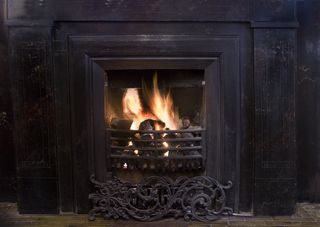
by blogediter | Sep 3, 2018 | Gas Logs
Gas Fireplace Troubleshooting
What is a Gas Fireplace?
A gas fireplace emulates a real fireplace while burning either propane or natural gas instead of wood. There are two types of gas fireplaces. Some are vented and some are ventless. Vented gas fireplaces are very realistic looking; however, there is as much as 90% heat loss since much of it goes up your chimney. The ventless type is designed to operate without a chimney and is very efficient; however, it isn’t quite as realistic looking as the vented type. So if you just want the look without worrying about wood or heat a vented model will do, but if you want to supplement your current heating system with an appliance which will not require electricity to work once lit and can be manually lit if necessary then the ventless model is the better choice.
Common Problems with Gas Fireplaces
Pilot Light Won’t Light: There are a bunch of issues that might keep the pilot from lighting. First, check to see if the fuel valve supply to the appliance is in the open position. If it isn’t then open it and try to light the pilot. Next, check to see if the emergency shutoff valve is “on” and if it doesn’t turn it on and try to light the pilot. If you use propane check to see if your propane tank is empty, ensure the appliance setting is in the pilot. If it isn’t, then set it to pilot and try to light the pilot. Check your instruction manual to ensure you are holding the match in the right place. Hold the reset button down when lighting and ensure you are holding it down long enough to activate the electromagnet in the safety shutoff system, which is 30-60 seconds. If you still can’t light the pilot, call a professional.
Pilot Light Lit but Gas Jet Won’t Light: Sometimes this happens because the control is not on the “On” setting, or because the thermostat is not set for heat. The solution is to check to see if the valve and remote control are on and check the thermostat to ensure its set to the on position. Also, check that the temperature is set to a degree that is above the current temperature in the room. If neither of these solutions fixes the problem it may be caused by a blockage in the orifice or burner. A service call is needed to have a professional fix the problem.
Soot in your room: This is somewhat common on vented gas fireplaces and may indicate an inadequate vent or chimney. The solution is to ensure the damper is open enough. If it is then you should clean the vent or chimney. If you get soot in your room with a ventless gas fireplace it is installed improperly. The solution is to have a professional fix the problem.
Prevention of Gas Fireplace Problems
Has your gas fireplace installation done by a Chimney Sweep professional and have the appliance serviced regularly? If vented, clean your vent or chimney periodically.
This troubleshooting article was submitted with permission by Highs Chimney Sweep
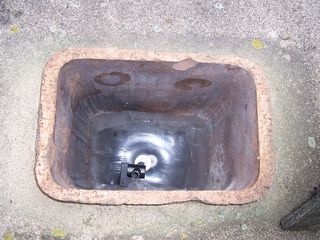
by blogediter | Aug 31, 2018 | Gas Logs
Plug My Vent Free Gas Log Chimney
Q: Jason, I have a set of non-vented gas logs which when not in use lets a horrible downflow of cold air in from outside. I saw an old thread that said the Chimney Balloon will deflate when installing near the damper if it is exposed to heat.
My question is can I close off the top of the chimney chase up on the roof with one of the Chimney Balloons? And would the temperature at that height be cool enough where we could fire the gas logs and still keep the Chimney Balloon intact? Thanks, DV
A: Hi DV, You pose a very good question. We have had many customers install a Chimney Balloon upside down from the top of the chimney when they have installed an electric fireplace insert, or if they have decommissioned their fireplace completely, but I have strong reservations about trying it with a vent free gas log.
My initial reaction is with the vent free gas log burning I am certain that the temperature at the top of the chimney will get to the 200 degrees Fahrenheit and trigger the Chimney Balloon to melt, shrink, and release. The reason for my certainty is that the damper you have is inevitably going to leak heat or convect heat into the chimney and that heat will naturally rise and collect against the Chimney Balloon.
My suggestion is to use the Chimney Balloon conventionally and just install it while the fireplace is not being used. Any amount of time you have the Chimney Balloon installed will be saving you money.
There is one other thing you should be aware of with your vent free gas log. There was a University of IL 3 year study that was done on ventless gas units in homes in Illinois. Here is a link to a blog article about the study and a link to the study results: http://www.chimneyballoonusa.com/blog/2009/08/3-year-univ-of-il-study-results-answer-how-safe-are-ventless-gas-logs.html
Personally, I found this research to be eye-opening and something that ventless gas log users should be aware of. I will let you draw your own conclusion from it, but pay particular attention to the NO2 level results in the study.- Jason
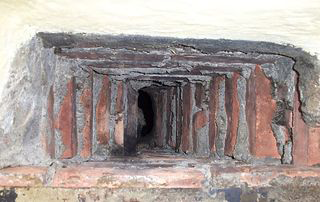
by blogediter | Aug 24, 2018 | Gas Logs
Bath Yellow Fireplace
Q: Jason, My wife and I recently bought a fixer-upper and are almost ready to move in. We knew that we had to do some work to our brick wood burning fireplace, and have been really swaying toward putting in a gas direct vent insert. When I looked up into the flu I was surprised to see that we don’t have a damper AT ALL. The previous owners had removed it leaving us with a 1′ x 2′ opening going up into our flu. My question is, will the Chimney Balloon work for me if I want to convert my existing fireplace into a directly vented gas log? -JD
A: Dear JD, Considering the outside temperature isn’t getting any warmer at this time of year, I would suggest you get a Chimney Balloon in this fireplace very soon so you won’t be loosing your interior heat up the flue.
It could be that the previous owner had a vented gas log in this fireplace when he lived there (he must have taken it with him) and that is why the damper was removed. Building code states that a vented gas log fireplace must have the metal damper removed or clipped open regardless if the fireplace is in use or not.
The reason for this code is to keep people with vented gas logs from accidentally asphyxiating the occupants of the home by burning the gas log with the damper closed. The side effect of this building code is wholesale heat and A/C loss 24/7 through the flue.
Many vented gas log owners opt to use a Chimney Balloon in the flue to stop the heat and A/C loss. If they accidentally light the gas log before manually removing the Chimney Balloon it is designed to shrink and burst and still allow the fireplace gasses to escape. This saves the occupants of the home but sacrifices the Chimney Balloon.
When you install a direct vent fireplace insert I suggest you have it vented through the wall and have the flue plugged with a Chimney Balloon. Even if you decide to wait on upgrading the fireplace get that balloon in right away. If you decide to vent the new direct vent gas fireplace up the chimney, you will still have to work out some way to plug the rest of the flue around the vent pipes. – Jason




